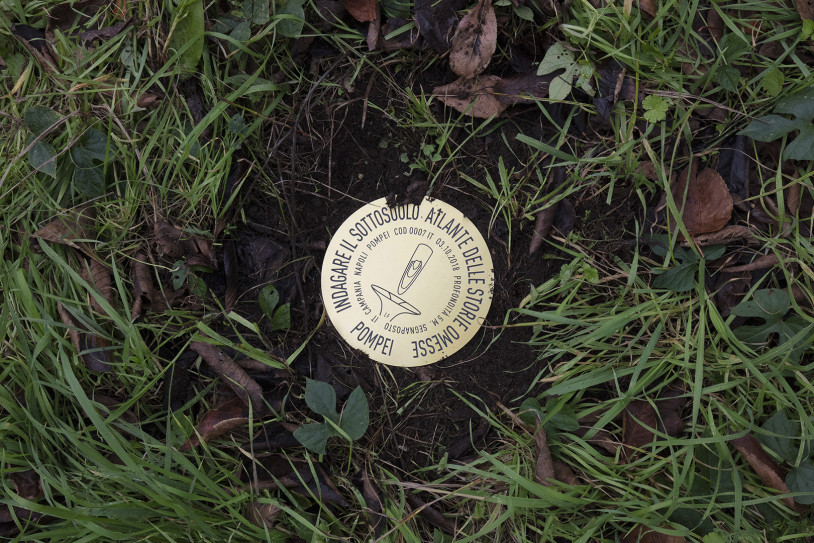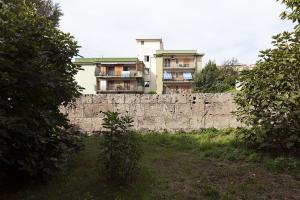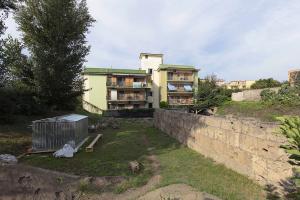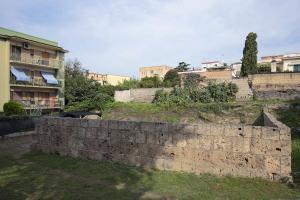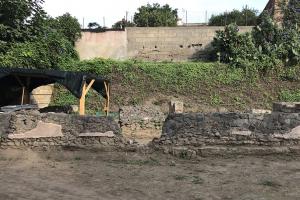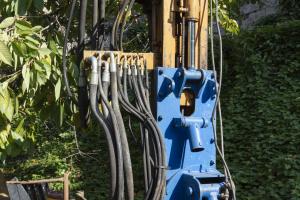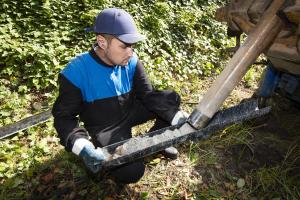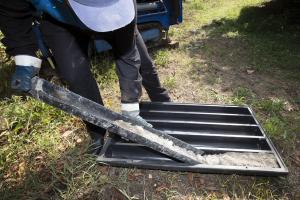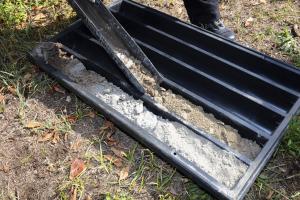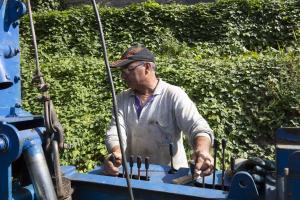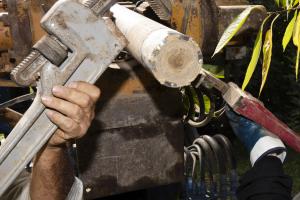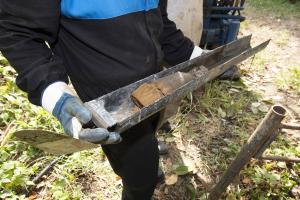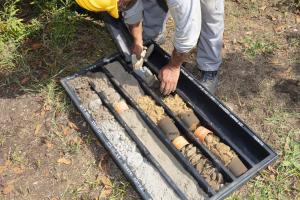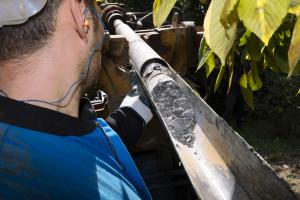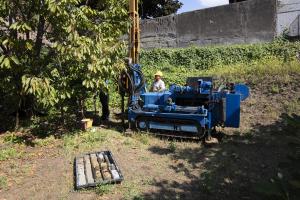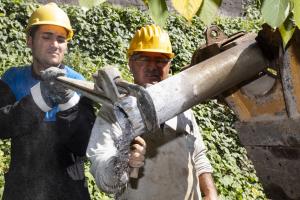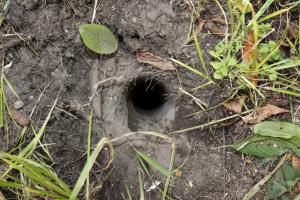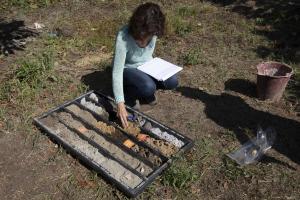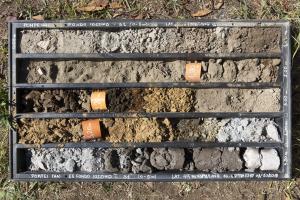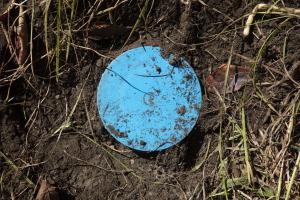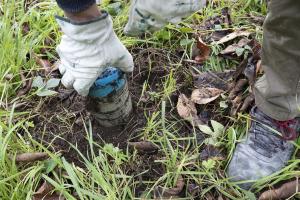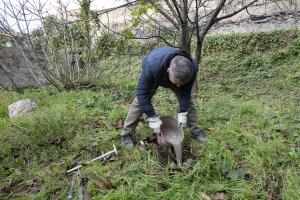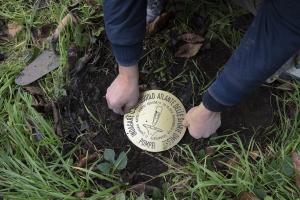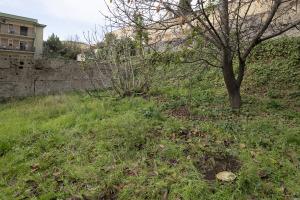
A feature of the suburban sanctuary in the Fondo Iozzino, where rites were held from the most ancient times, is the presence of an enormous number of votive offerings. These consist of miniature objects such as vases, chalices, cups, and saucers dating from the late seventh century BC. The arrival of these offerings is recorded in a dump of votive materials, which were deposited in the late second century BC in a fenced-in space, in order to raise the floor level. In the subsequent architectural redevelopment of the sanctuary, this sedimented layer of votive deposits formed a sort of connection with the previous religious activities. The huge quantity of votive materials points to an archaic cult, devoted to a divinity we know only by the epithet “apa”, the customs of which included an enigmatic and impenetrable ritual. The pottery provides evidence of the religious activity of the sanctuary, with its sacrifices, offerings, and libations, which included the use of wine, as revealed by residual organic traces. The artefacts – vases, jugs, and bowls – bear sgraffito inscriptions in the Etruscan alphabet, and dedicatory formulas with the names of the offerors, together with scratched symbols, including crosses, stars, asterisks, and small trees. This is the largest collection of Etruscan inscriptions ever found in a single place in southern Italy, and it sheds light on the very earliest period of the sanctuary and on the presence of the Etruscans in the Vesuvius area. These artefacts show that the sanctuary was used for this form of worship for a very long time, from the seventh to the first century BC.
Similarly, in one of the most evocative spaces in the monumental sanctuary built in 1800 in contemporary Pompeii, we find a gallery of devotional ex-votos dedicated to the Blessed Virgin of the Rosary. The ex-votos in the premises next to the basilica are in the form of objects, photographs, texts and painted panels offered to the Madonna of the Rosary in thanks for grace received. They do not just bear witness to the faith, for they are also a symbol of the perpetual memory of great devotion to the Virgin. Most of these votive offerings in the sanctuary consist of paintings, some of them beautifully made by master craftsmen known as madonnari. In them we can see some of the characteristic elements used to portray the state of mind and the stories of the patrons. These might include a view of some terrible episode that happened before a miracle, the representation of a saint, a narrative description, and a picture of the worshipper. At the bottom we see the Latin initials V.F.G.A. (votum fecit, gratiam accepit – vow made, grace received) or the Italian P.R.G. (per grazia ricevuta – for grace received). Over the years, goldsmiths, silversmiths, decorators, potters, and photographers were all involved, making these ex-votos a consistent part of the historic and devotional memory of the people, as well as testimony to their artistic and crafts traditions.

The 0007 core sampling site is in a sacred area in the southern suburb of ancient Pompeii. Geographically, the sanctuary is on a low hill (20 m ASL) near the mouth of the river Sarno, and about 500 m from the south-east boundary of ancient Pompeii.
The sanctuary was discovered in 1960, after the extraction of lapilli for the construction of a private building. Work was halted to permit the unearthing of the walls of an imposing enclosure in pseudo-opus isodomum with limestone blocks from Sarno. Inside, there was a second enclosure dating from the first century BC. This one was smaller in size, made in opus incertum with blocks of grey tuff from Nocera with two podiums for aedicules and a base. The resumption of research in 1992 showed that the sanctuary had been given monumental form in the Hellenistic age with the construction of an enclosure in pseudo-opus isodomum paved internally in opus signinum. The layer on which the most recent sacred area was built contained a whole deposit of votive offerings, with a wealth of mainly miniature objects. These included weapons (in bronze and iron) and pottery, most of which was bucchero ware. Among the weapons were short swords, about twenty iron spear heads, some with a bronze handle, javelin tips, an iron sceptre (very rare for southern Italy) and a large bronze shield.
The most important aspect of the findings, which date from the Archaic period, is the considerable quantity of bucchero pottery with graffito inscriptions in the Etruscan language. The inscriptions were made on the basins and feet of bowls and banqueting vessels which, after use, were placed upside down on the ground. These inscriptions reveal the names of the Etruscan offerors, who also came from Etruria, and the god (“Apa” or “father”), who may have been Jupiter Meilichios, to whom the sanctuary was dedicated.
The 0007 core sampling site is located outside this enclosure, which is made of limestone blocks. The stratigraphy shows a gap in the uppermost part, where the debris from the eruption in AD 79 is missing. This was probably removed at the time of the discovery of the archaeological structures, which can now be seen on the front of the excavation nearby. The stratigraphic sequence extracted by coring consists of backfill for the first 60 cm. Beneath this is a humified level containing a fragment of modern hollow brick tile.
From -1.15 to -2 m from the ground level there is a greyish reworked layer of ash-tuff (US3), which covers the accumulation layer over a pit or canal (US 4-5), possibly of anthropic origin, measuring about 40 cm. From -2.4 m come the remains of the so-called paleosol B (US6), which is an important stratigraphic marker that is clearly identifiable throughout the Piana Campana, where traces of the Eneolithic and Neolithic ages have been found. The paleosol is that of the pedogenesis of the underlying products of the Mercato eruption of Vesuvius (US7) which occurred 8000 years ago. It consists of ochre-coloured ash containing white pumice. These deposits rest directly on the lava bed, which is found at -3.60 m below ground level. The upper level of this varies in colour from blackish to pinkish grey as the depth increases.
The archaeological stratigraphy and geological data acquired from the core sampling site has led to some interesting considerations on the definition of some environmental and morphological aspects regarding the place where it was decided to build the sanctuary already in the Archaic period (7th century BC). In particular, it is clear that the decision to place the sanctuary here was at least in part due to the fact that during the Archaic period the site was on high ground facing the river Sarno, in a marginal area of the territory.
